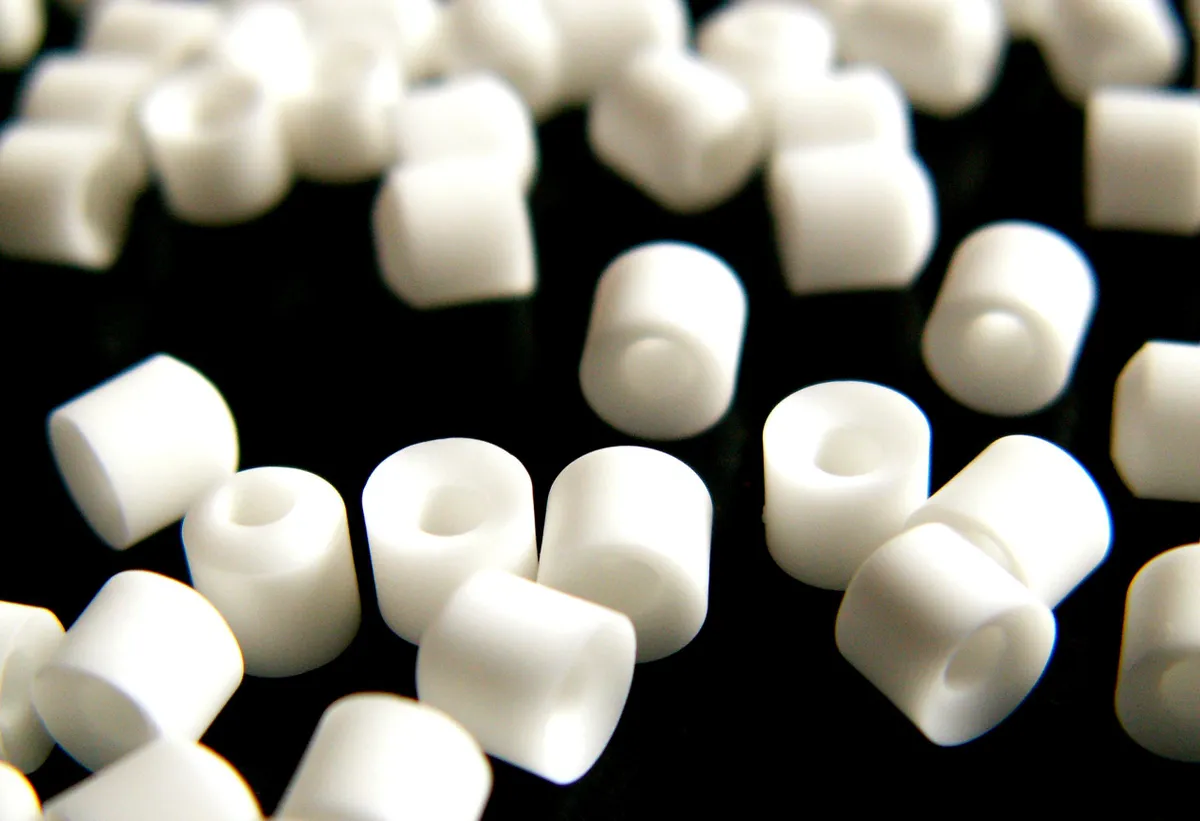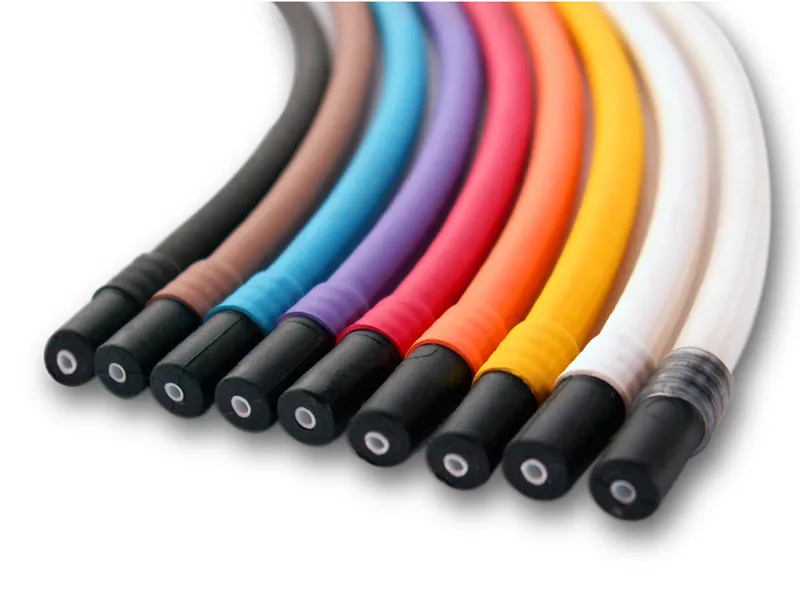Vertebrae brake cables are aimed at improving your stopping performance through use of ceramic housing, and while they're priced at a hefty €99 a set, they do work as claimed.
The Vertebrae cabling consists of several parts. The inner cables are Jagwire stainless steel surrounded by a low-friction Teflon liner. The outer consists of dozens of interlocking ceramic verterbrae, which you can assemble yourself – if you've got the patience – or buy pre-assembled.
The entire cable is held together by a section of 'spinal wrap' – a polymer layer that needs to be heat shrunk over the verterbra section. Be warned: if you're doing self-assembly, you'll need a heat gun and a lot of patience.
It's the ceramic verterbrae that separate this product from other high-end cable sets from the likes of Nokon, Jagwire and Gore. They're made from processed alumina (aluminium oxide), a hard wearing ceramic that won't degrade as quickly as traditional metal-core cable housing.
In theory it means you should be able to re-use the vertebrae over and again, simply replacing the rest of the components, which should be fairly cheap. The veterbrae, on the other hand, are expensive to produce.
Durability aside, the main advantage of ceramic housing is the way it reduces compression of the outer when you squeeze the brakes. This should give you more direct braking and consequently mean you use less energy. If you live in a particularly hilly area, you'll appreciate this.

The outer cable consists of dozens of interlocking ceramic verterbrae
Putting it to the test
We ran a set of the Vertebrae brake cables on our road bike for several months and were impressed with their performance. They feel very different to normal brake cables because of how little give there is when squeezed. There's no sponginess, plus a firm and very linear braking response. It feels different but we liked it.
We weren't able to test the Verterbrae to destruction in this relatively modest time period, so can only guess at how long the ceramic components will last. Hopefully a while. We did notice a little bit of splitting in the spinal wrap, but that can be quite cheaply replaced.
Are they better than conventional brake cables? Yes, we think so. Are they worth it? That's for you to decide. It's a similar argument to buying a £5,000 frame instead of a £500 one.
A range of options
The Verterbrae brake cables are designed to be compatible with most bikes and cable brakes (Shimano, Campagnolo, SRAM, FSA). They come in a range of 13 colours from black to glow-in-the-dark. There are options to buy shorter lengths of cable if you don't feel like shelling out on a full set.
However, if you want the ultimate in ceramic housing stiffness and don't care how much it costs, you can buy the ZTA Vertebrae for the trifling sum of €199 a set – yes, you read that right. Vertebrae cables are only available to order direct from the Verterbrae website.
